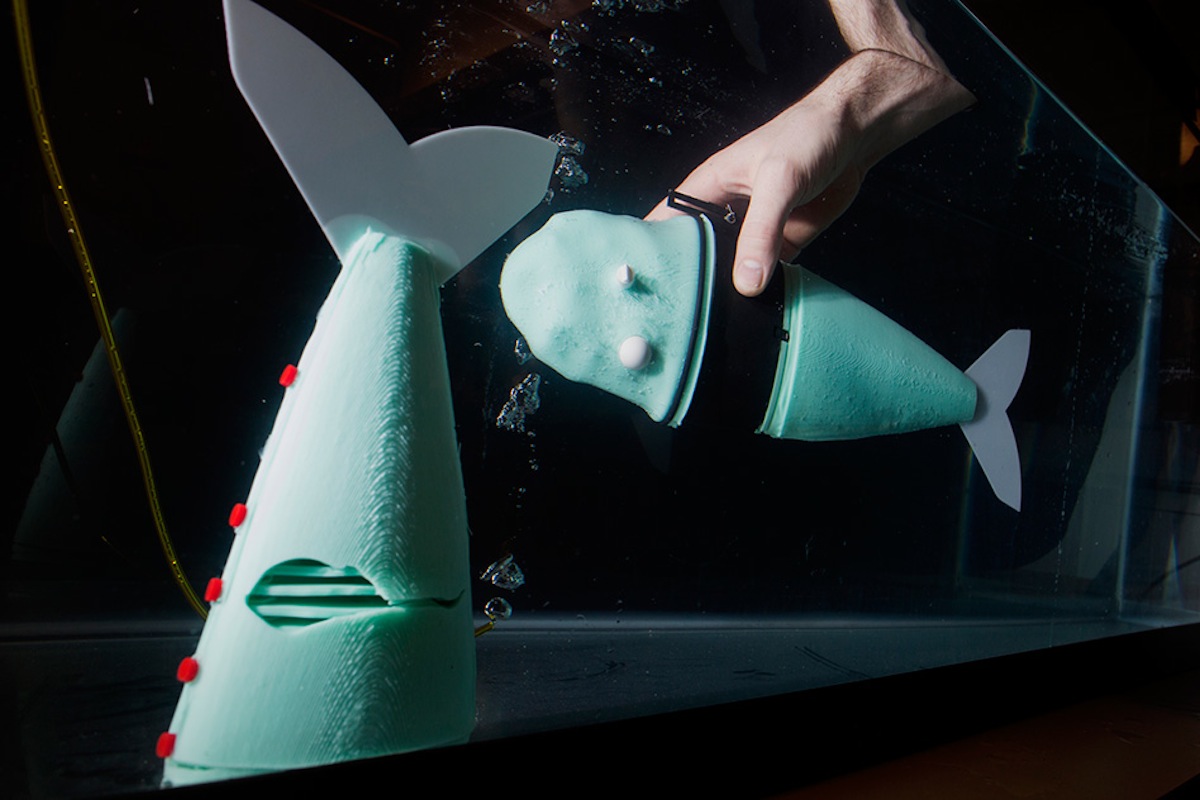What the Tech?: Robotic Fish Are Lurking in the Waters

Photo via MIT
Legislators and privacy advocates have been seriously concerned with unmanned drones taking over the skies and spying on people below. But did they ever think about what autonomous creatures could be swarming the waters one day?
Perhaps they should start having that conversation soon.
Earlier this week, MIT unveiled a video and photos of a free-moving robotic fish that can cut through the waters without the guidance of a human being. The life-like machine is so realistic—in both shape and feel—that it mimics the movements of a real underwater creature to a T. In a way, it even has built-in gills to help it survive.
“It’s the first self-contained autonomous soft robot capable of rapid body motion,” explains MIT News in a statement. “[It] can execute an escape maneuver, convulsing its body to change direction in just a fraction of a second, or almost as quickly as a real fish can.”
Whoa.
Daniela Rus, a professor of electrical engineering and computer science at MIT, said the development stands at the frontier of the soft-robot revolution. Because it’s made of a “soft silicon” at the base with high-tech gadgets stuffed into the front part of the robotic fish, it allows the device to become capable of those “very rapid” movements with ease, pushing the envelope, Rus said, of what the future of robots could be like. “The robots are self-contained, and autonomous. In other words, we can package the power source, the computation, and the actuation and sensing needed for these robots to deliver their motions,” she said.
Andrew Marchese, one of the graduate students working on the complex robotic fish, said the way the machine works is by storing fluid in the more rigid area at the front of the soft robot, in the form of a gas, and releasing that gas through a series of pipes and valves into the body where the tail is. “Basically, by inflating and un-inflating different parts of the body, we can get it to undulate,” said Marchese.
In order to give the fish directions while it’s submerged underwater, Marchese can send a signal wirelessly from his computer to the “brains,” telling the hardware what to do next, and prompting it to take those actions accordingly. “The maneuver is so fast, and it has such high body curvature, that it shows soft robots might be more capable than hard robots in some tasks,” said Marchese.
The inventors didn’t say how long it would be until lasers are strapped to the head of the fish.
)

